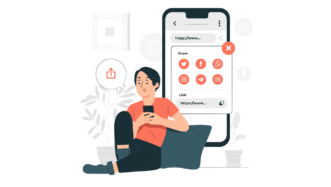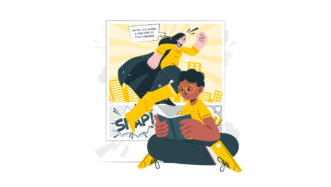LESSON OVERVIEW
The main objectives of this speaking lesson about shopping addiction are to:
- analyse and discuss how shopping affects people;
- watch an informative video, recognize and critically evaluate its core concepts.
In this speaking lesson, students share how shopping makes them feel, discuss how addictive it can be and what the signs of shopping addiction are. They watch and discuss a video in which a neuroscientist explains how to fight shopping addiction. Students also talk about how instant gratification works and how to break the pattern.
C1 / Advanced45 min
60 minSpeaking ClassUnlimited Plan
This is a Speaking Class worksheet. It includes a variety of tasks that let your students practise their speaking skills. This lesson format does not focus on grammar or vocabulary. Learn more about it here.
WARM-UP & DISCUSSION
The lesson starts with a warm-up activity in which students complete the sentence. They need to finish the sentence ‘Shopping makes me feel…’ with the first idea that comes to their mind. Then, students explain their answers and compare them with their partner’s. This speaking lesson about shopping addiction also includes an additional vocabulary task. Students discuss the difference between the phrases (impulsive purchasing vs compulsive purchasing, instant gratification vs delayed gratification, rational decision-making vs emotion-driven choice). Students look at other possible ways to complete the sentence from a warm-up and discuss why people might feel these things (e.g. FOMO, having mixed feelings, feeling socially connected, etc.). They also read a few statements about shopping and come up with arguments for and against them. Then, they discuss whether they agree or disagree with the arguments.
MORE ACTIVITIES TO TALK ABOUT SHOPPING ADDICTION
In this part of the speaking lesson about shopping addiction, students watch an informative video about why shopping is addictive and how to control this addiction. First, students read the quotes from the video and discuss what they might mean or be about. Then, they watch the video and check their ideas. After that, students have a discussion and talk about shopping as a coping mechanism, retail therapy, paying using credit cards vs cash, shopping habits in the future, etc. In the next activity, students read the statements and decide if they are about people with a shopping addiction. As a wrap-up of this speaking lesson about shopping addiction, students look at the chart which illustrates how instant gratification works and discuss it.
Subscribe to unlock these and many other Standalone lesson lesson plans with the Unlimited planWORKSHEETS














Thank you for the class !!!
I’m glad you liked it 🙂
Worked very well with a particular group once expectations were set that it wouldn’t be a cakewalk. There was still a lot of comprehensible stuff to latch onto. Also liked how it recycles some of the language from past lessons, for example, FOMO, and all the other relatable consumer-related content. Thank you for the help!
Thanks, we intended to make it a more thought-provoking lesson than a regular shopping worksheet 🙂
Thanks!
🤗🤗
Absolutely brilliant class!
thanks 🤗
Just amazing, thanks a lot!
Thanks, I’m happy you liked it 🙂